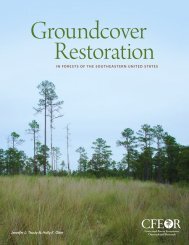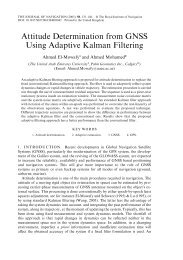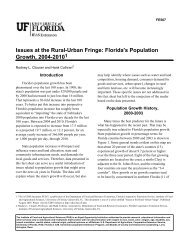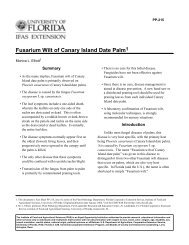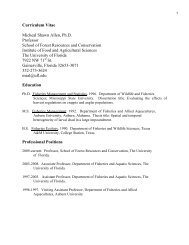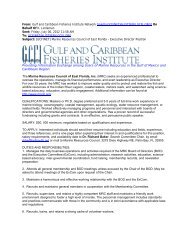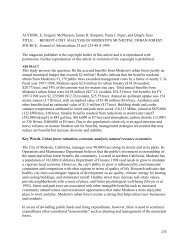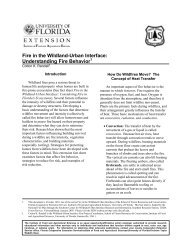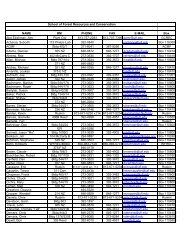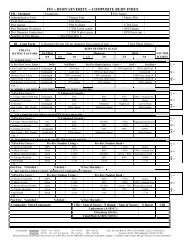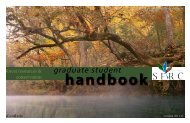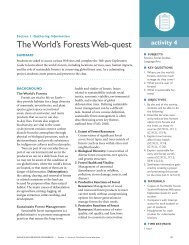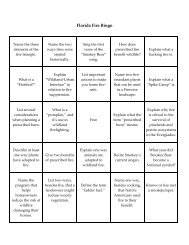Longleaf Pine Forest Restoration & Management - School of Forest ...
Longleaf Pine Forest Restoration & Management - School of Forest ...
Longleaf Pine Forest Restoration & Management - School of Forest ...
You also want an ePaper? Increase the reach of your titles
YUMPU automatically turns print PDFs into web optimized ePapers that Google loves.
FOR 70<br />
Benefits <strong>of</strong> Prescribed Burning 1<br />
Alan J. Long 2<br />
History <strong>of</strong> Fire in Florida<br />
Fire has been a frequent visitor to Florida's<br />
forests for thousands <strong>of</strong> years. During spring and fall<br />
dry seasons, and even during periods <strong>of</strong> summer rain,<br />
fires ignited in grass, dry leaves, and brush at the base<br />
<strong>of</strong> lightning-struck trees. Native Americans also set<br />
fires to reduce vegetation, improve wildlife or grazing<br />
habitat, and create space for crops. Across much <strong>of</strong><br />
historic Florida, these natural and human-caused fires<br />
maintained open park-like landscapes dominated by<br />
longleaf and other pines. Wildlife were nourished by<br />
the diversity <strong>of</strong> plants that thrived in these regular fire<br />
regimes. The short intervals between fires<br />
undoubtedly kept most fires far less intense than<br />
those <strong>of</strong> the 1998 fire season.<br />
During much <strong>of</strong> the 20th century, intensified fire<br />
suppression and prevention activities decreased the<br />
frequency <strong>of</strong> wildfires and the area they covered.<br />
This brought about changes in forest ecosystems.<br />
Understory brush and hardwoods became more dense<br />
and both live and dead vegetation accumulated,<br />
increasing the risk <strong>of</strong> large and damaging wildfires.<br />
In the last 40 to 50 years these changes in<br />
Florida's forests have prompted a return to using fire,<br />
under carefully controlled conditions, to accomplish<br />
many <strong>of</strong> the same benefits that were historically<br />
provided by natural fires. Today, approximately 1.5<br />
to 2 million acres are prescribed burned each year for<br />
forest management, agriculture, grazing, and<br />
ecological restoration. At the same time, problems<br />
associated with smoke in populated areas and on<br />
highways have become more prominent. For the<br />
continued use <strong>of</strong> prescribed fire, landowners and the<br />
public alike must understand the value <strong>of</strong> fire for<br />
accomplishing various management goals as well as<br />
the constraints that limit its use.<br />
Reasons We Burn<br />
Just as with natural and human-ignited fires in<br />
the past, prescribed burning today accomplishes<br />
many important ecological functions and landowner<br />
objectives.<br />
Reduction <strong>of</strong> Hazardous Fuels<br />
Prescribed burning removes accumulated fuels<br />
and therefore the risk <strong>of</strong> intense fires. Arson, human<br />
carelessness, and lightning will inevitably ignite fires<br />
1. This document is FOR 70, one <strong>of</strong> a series <strong>of</strong> the <strong>School</strong> <strong>of</strong> <strong>Forest</strong> Resources and Conservation, Florida Cooperative Extension Service, Institute <strong>of</strong> Food and<br />
Agricultural Sciences, University <strong>of</strong> Florida. First published November 1999. Minor Revision: April 2002. Reviewed September 2006. Please visit the<br />
EDIS Web site at http://edis.ifas.ufl.edu.<br />
2. Alan J. Long is Associate Pr<strong>of</strong>essor, <strong>School</strong> <strong>of</strong> <strong>Forest</strong> Resources and Conservation, Cooperative Extension Service, Institute <strong>of</strong> Food and Agricultural<br />
Sciences, University <strong>of</strong> Florida, Gainesville, 32611. This publication was produced by the University <strong>of</strong> Florida with assistance from a grant from the<br />
Advisory Council on Environmental Education <strong>of</strong> the Florida Fish and Wildlife Conservation Commission.<br />
The Institute <strong>of</strong> Food and Agricultural Sciences (IFAS) is an Equal Opportunity Institution authorized to provide research, educational information and<br />
other services only to individuals and institutions that function with non-discrimination with respect to race, creed, color, religion, age, disability, sex,<br />
sexual orientation, marital status, national origin, political opinions or affiliations. U.S. Department <strong>of</strong> Agriculture, Cooperative Extension Service,<br />
University <strong>of</strong> Florida, IFAS, Florida A. & M. University Cooperative Extension Program, and Boards <strong>of</strong> County Commissioners Cooperating. Larry<br />
Arrington, Dean



